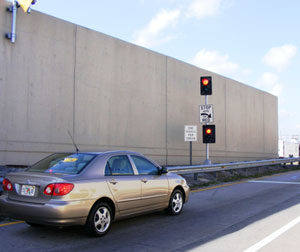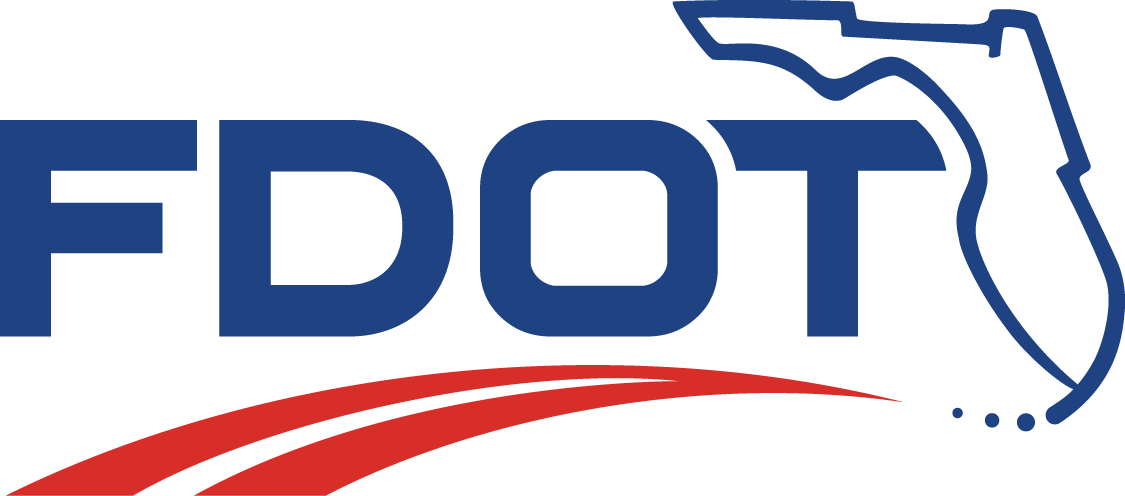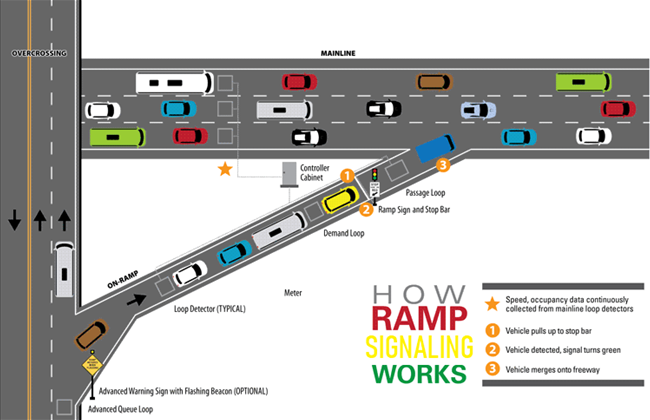
Ramp Signaling
Ramp Signals are traffic lights that reduce congestion along northbound and southbound Interstate 95 (I-95) in Miami-Dade and Broward Counties.
Ramp Signals are activated during times of heavy congestion, such as weekday rush-hour periods, but may also be activated in case a traffic incident or special event impacts regular expressway operations. The signals work based on real-time traffic
conditions and alternate between red and green lights to control the rate which vehicles enter the highway. They break up the groups of merging vehicles to reduce the impacts of entering traffic to regulate the flow on the mainline. To date, Ramp
signals have significantly improved mobility and travel speeds during the evening and morning rush hour periods by 16% and 11% respectively.
How Does Ramp Signaling Work?
- When the signal is red: Pull up to the marked white line on the pavement before the “Stop Here on Red,” sign to activate the ramp meter light.
- When the signal light turns green: One or two vehicles, as indicated by the signage on the ramp, should proceed and merge onto the interstate.
- Be patient: A short wait at the ramp will help reduce your travel times and improve your commute along the mainline.
Enforcement of Ramp Signaling is part of the 95 Express program. Drivers who fail to obey the traffic signals will be subject to penalties as permitted by law.
Ramp signals are traffic signals installed on freeway on-ramps to control the frequency at which vehicles enter the flow of traffic on the freeway. As seen in the diagram below, vehicles traveling from an adjacent arterial onto the ramp form a queue behind
the stop line. The vehicles are then individually released onto the mainline, often at a rate that is dependent on the mainline traffic volume and speed at that time. The configuration in the diagram is the most common; however, some agencies have
altered this design to accommodate transit and high-occupancy vehicle (HOV) policies or existing geometric limitations.
Without ramp signals in operation, multiple vehicles merge in tightly packed platoons, causing drivers on the mainline to slow down or even stop in order to allow vehicles to enter. The cascading slower speeds, both on the mainline and on the ramp, quickly
lead to congestion and sometimes stop-and-go conditions. Ramp signals can break up the platoons by controlling the rate at which vehicles enter the mainline from the ramp, as shown in the figure to the right. This allows vehicles to merge smoothly
onto the mainline and reduces the need for vehicles on the mainline to reduce speed.
In addition to breaking up platoons, ramp signals help manage entrance demand at a level that is near the capacity of the freeway, which prevents traffic flow breakdowns. Ramp signals are shown to reduce peak hour occupancies and quicken recovery from
mainline breakdown back to or below the critical occupancy threshold. Typical results include reductions in travel time, reductions in crash rates, and increased traffic speed.




